
UNO Stacko
UNO Stacko is a fun twist on classic UNO, combining card-matching with block stacking. Players take turns carefully removing blocks from a tower and placing
If you’re looking for a nice game of cards to pass the time, then UNO online NZ is a great option to play with friends and families for a great time full of fun and laughter. This card game can be played by two to ten players, as there are 108 total cards in the pack. The objective of the game is to be the first person to score the total points by getting rid of all the cards in your hands.
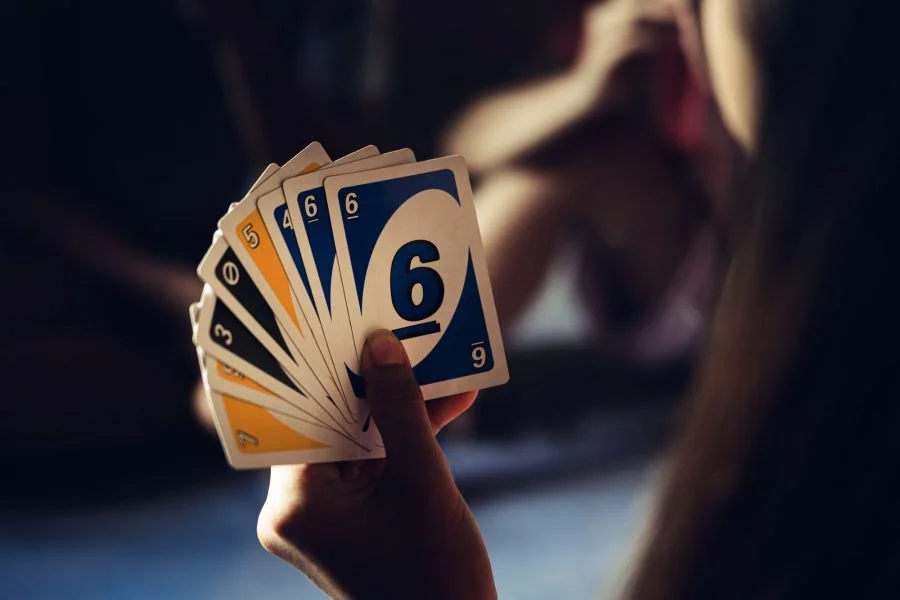
Another major advantage of this game is that you can play it anytime and anywhere without the need for power or an internet connection. So even when the lights go off, and there’s no outage, you can whip out your cards and keep yourselves entertained. For New Zealanders, you can learn more about this card game below.
| Category | Description |
|---|
| Game | UNO is a card game played by 2 to 10 players with 108 cards. |
| Objective | Get rid of all your cards to score points. |
| Action | Description |
|---|
| Match Cards | Match by number or color. |
| Draw | If no match, draw from the deck. |
| Special Cards | Wild, Skip, Reverse, Draw 2 cards affect gameplay. |
Before the game can be played, a dealer has to be chosen. For this purpose, the deck of cards is shuffled, and each player is to draw out one card from the deck. Whoever draws out the UNO card with the highest value wins. Sometimes, a player might draw out a wild card, a special card that doesn’t have numbers. When this happens, they must return that card to the bottom of the deck and pick another one.
If two or more New Zealand players pick cards with the same highest values, they must return their cards to the deck and draw another card until one picks a card with a higher value than the other.
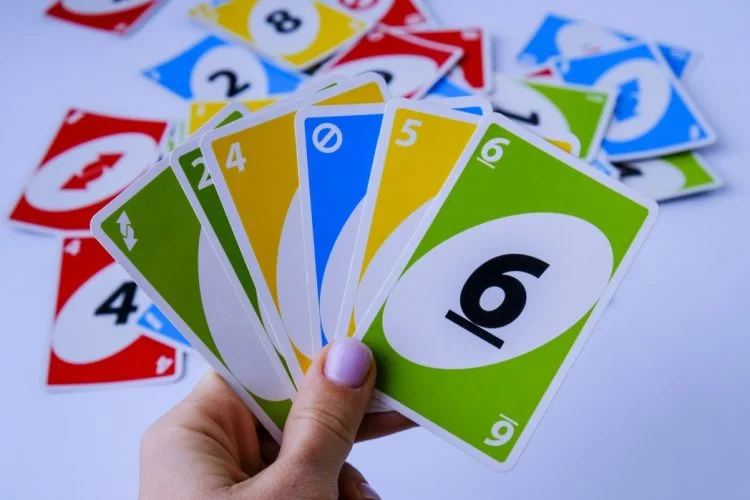
One major rule in UNO is that a NZ player must say “UNO” before playing their second-to-last card, so after saying this, you’ll have one card left to play. If you only have one card left, and another player calls out “UNO” while still holding their second-to-last card, you are required to pick four more cards from the pile.
Calling “UNO” does not exactly win the game. It is just a notice that you’re about to win. After calling “UNO”, you must still play your last card, which must match the card already down, or you’ll have to draw from the pile again.
| Category | Description |
|---|---|
| Winning | First player to play all their cards wins the round. |
| Scoring | Points are based on remaining cards in opponents’ hands. |
At the end of a game round, the total card value is calculated, and the score is jotted to determine if any player made it to the 500th mark. Here’s how this number is calculated for New Zealanders.
When these cards are calculated, New Zealanders whose cards surpass the total point is eliminated. After the elimination, the game continues. The elimination process occurs again until a sole winner emerges.
| Card Type | Points |
|---|
| Number Cards | Face value (1-9) |
| Special Cards | Wild/Draw 4 = 50 points, Skip/Reverse/Draw 2 = 20 points |
A NZ player cannot be forced to play a card in his hands, even if they already have one that matches the face-down card. They can only choose to make that decision by themselves. However, if a player decides to draw a card from the pile, even when he has a matching card in his hands, he must continue drawing until he finds a matching card. Such player cannot play the previous matching card after a draw unless he finds a new one.
UNO is a classic card game that is simple to learn and can be enjoyed by nearly anyone who is old enough to hold a card. It is a great way to make friends (and possibly enemies). Grab some players and ready yourself for a thrilling adventure through the world of colourful chaos.
Your main goal is simple, rid yourself of all your cards before your opponents do.
The deck of cards before you are a mosaic of colours, boasting four distinct hues: red, green, blue, and yellow. Each card carries a numerical value from one to nine, harbouring the potential to alter the game’s trajectory. To play a card, you must match either the colour or the number of the card atop the discard pile. For instance, if a red “5” resides on the pile, you may lay down any red card or any card displaying the number “5.” Beware of the critical juncture when a sole card remains in your grasp. At this moment, you must solemnly announce “UNO”, notifying your rivals of your impending triumph. Falter and fail to issue this proclamation, and vigilant adversaries shall call you out, forcing you to draw two additional cards as punishment.
Such is the gravity of UNO, a test of intellect, timing, and foresight. Gather your companions, shuffle the deck meticulously, and embark upon this cerebral battle of wits.
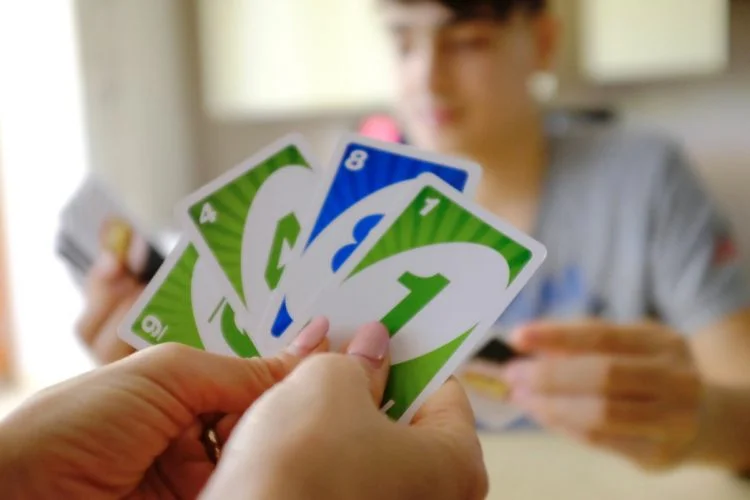
In the world of UNO, stacking introduces a thrilling twist as players strategically unleash their own “Draw Two” cards to redirect the penalty toward their opponents. This rule variation adds an extra layer of excitement and opportunities for strategic retaliation. However, players must carefully assess their options and timing, as a miscalculated stack can backfire and leave them burdened with a hefty card penalty. Master the art of stacking to turn the tide of the game and outmanoeuvre your rivals in this exhilarating UNO strategy.
“7-0” is a unique rule in UNO that spices up the gameplay and encourages interaction among players. When a player plays a “7” card, they have the power to swap hands with any opponent of their choice. Additionally, when a player plays a “0” card, they can initiate a hand rotation, where all players pass their hand in the direction of play.
“Jump-in” is a thrilling rule in UNO that allows players to interrupt the regular sequence of play and quickly jump into the action. Normally, players must wait for their turn to play a card. However, with the jump-in rule, if a player has an exact matching card to the one currently on the discard pile, even if it’s not their turn, they can swiftly play that card and seize the moment.
Special cards add layers of excitement, strategy, and unpredictability to the game of UNO. Timing their play strategically and considering their potential consequences is essential for achieving victory. Whether it’s forcing opponents to draw cards, changing the flow of the game, or setting up advantageous moves, mastering the use of special cards can significantly impact your UNO prowess. Special cards in UNO introduce exciting twists and strategic opportunities to the game. Here’s a breakdown of each special card and its function:
When played, the next player in line must draw two additional cards and forfeit their turn. This card can create a chain reaction if subsequent players also hold Draw 2 cards and choose to “stack” the penalty onto the next player.
This card reverses the direction of play, flipping the order in which players take their turns. For example, if the game was moving clockwise, it will suddenly switch to counterclockwise. The Reverse card can disrupt opponents’ plans and provide a chance for strategic manoeuvring.
When a Skip card is played, the next player’s turn is skipped entirely. They are left waiting anxiously for their next opportunity to play. This card can be strategically employed to thwart opponents’ progress or protect oneself from impending penalties.
The Wild card is a versatile and powerful tool. When played, the player gets to choose the colour that resumes play. This card allows players to strategically align the game with their hand, create obstacles for opponents, or force them to draw cards of a specific colour.
Wild Draw 4 card: The Wild Draw 4 card is a force to be reckoned with. Not only does it enable the player to choose the colour of play, but it also forces the next player to draw four additional cards from the deck.
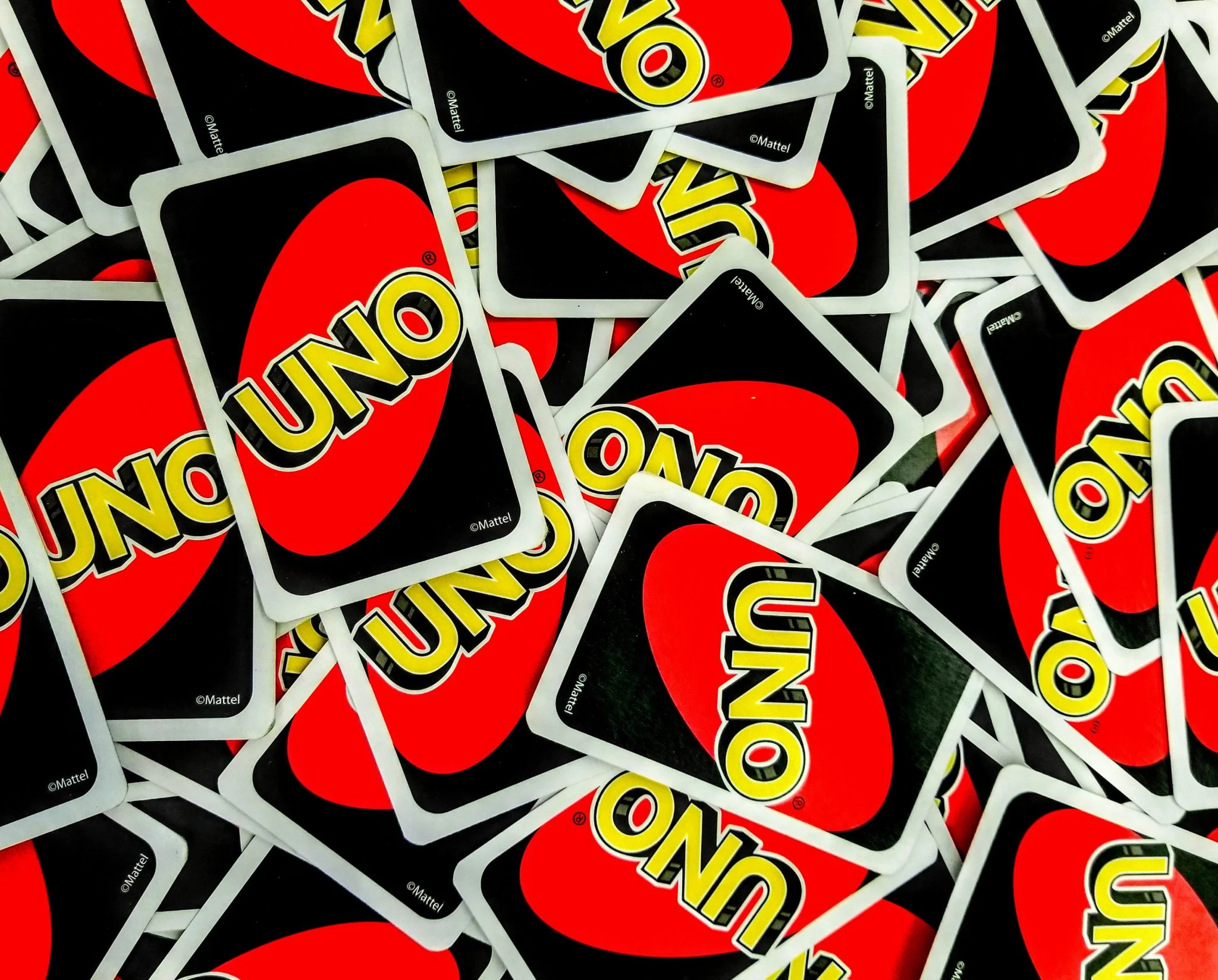
In addition to the standard UNO deck, there are some extra cards that can be included to add further variety and excitement to the game. Two common types of extra cards are the “Blank” card and the “Extra” card.
The Blank card is a blank slate, devoid of any predefined colour or number. This card can be customised by players, allowing them to introduce their own rules or assign special actions to it. The Blank card opens up a realm of creativity, enabling players to unleash their imagination and inject personalised elements into the game.
The Extra card is an additional card that can be added to the deck, featuring a unique rule or action determined by the players. It can introduce new challenges, twists, or penalties, making the game even more engaging and unpredictable. The specific rule or action associated with the Extra card should be agreed upon by all players before starting the game.
Going out in UNO means playing your second-to-last card and announcing “UNO” to alert others.
Reneging refers to making an invalid move and facing penalties for not following the rules.
To determine the UNO score, add up the point values of the cards remaining in each player’s hand. The player who went out doesn’t receive any points. The points are tallied, and the player with the fewest points is declared the winner.
When playing UNO with two players, the game adapts with variations for cards like Reverse and Skip to keep the gameplay engaging.
Partners in UNO is a team-based variation where two players form a partnership and sit opposite each other. They work together to play cards strategically and win as a team, communicating and coordinating their moves to defeat the opposing partnership.

Multi-table tournaments in UNO are competitive events where multiple game tables are set up, and players compete simultaneously. Each table plays UNO independently until a certain number of players advance to the next round. The process continues with elimination rounds until a final table is reached, where the ultimate UNO champion is determined.
The “Uno Challenge” is a popular game that puts a new twist on the classic card game, Uno. In this challenge, players compete to complete various tasks or obstacles while playing Uno. These challenges can range from physical tasks like running a race or performing a specific action, to mental challenges like solving puzzles or answering trivia questions. The goal is to successfully complete the challenges while following the rules of Uno and being the first to finish.
“UNO Ultimate Edition” is an enhanced version of the classic card game, UNO. It includes additional features, variations, and special cards that add more excitement and strategic elements to the gameplay. The Ultimate Edition typically offers new game modes, customisable rules, and expanded card decks, providing players with a fresh and engaging experience while retaining the essence of the original UNO game.
| Category | Description |
|---|
| Game Overview | UNO is a card game played by 2 to 10 players with a deck of 108 cards. The goal is to get rid of all your cards to score points. |
| Objective | Be the first to get rid of all your cards. |
| Setup | Deal 7 cards to each player. Remaining cards form the draw pile. |
| How to Play | Players match cards by number or color. If no match, draw from the deck. Special cards like Wild, Skip, Reverse, Draw 2 can alter gameplay. |
| UNO Call Rule | When down to one card, say “UNO”. Failure to do so before the next player calls it out results in drawing two cards. |
| How to Win | First player to play all their cards wins the round. Points are scored based on remaining cards in opponents’ hands. |
| Score Calculation | Number cards score face value, Wild cards and Wild Draw 4 score 50, Skip, Reverse, and Draw 2 score 20. Total points determine the winner. |
| Special Cards | – Draw 2: Next player draws 2 cards and skips turn. – Reverse: Reverses play direction. – Skip: Skips the next player. – Wild: Choose color. – Wild Draw 4: Choose color and force next player to draw 4 cards. |
| Variants | – 7-0: Play a 7 to swap hands, play a 0 to rotate hands among players. – Jump-in: Play an exact match even if it’s not your turn. |
| Extra Cards | – Blank: Customizable card, can add personal rules. – Extra: Adds unique rules as agreed by players. |
| Two Players | Adjusts with Reverse and Skip cards for engaging gameplay. |
| Partners | Team-based variation where two players work together. |
| Multi-table Tournaments | Players compete at multiple tables until finalists advance to the final round. |
| UNO Ultimate Edition | Enhanced version with added features, custom rules, and expanded card decks. |
| Challenges | – UNO Challenge: Compete with tasks and puzzles during the game. |

UNO Stacko is a fun twist on classic UNO, combining card-matching with block stacking. Players take turns carefully removing blocks from a tower and placing

Many card games are designed to be easy to learn and fun to replay. The DOS card game – a modern spin-off from UNO that

Card games have always been a go-to way to bring people together, and UNO is one of the easiest to pull out when friends want

https://pixabay.com/photos/u-n-playing-cards-gesellschaftsspiel-3511182 Uno remains relevant five decades after its debut. The card game drew inspiration from the German crazy eight classic Mau Mau. But its popularity
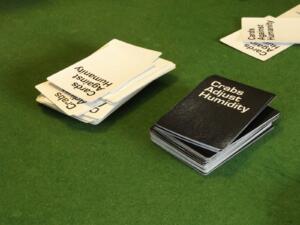
Adult games are designed to provide fun, often humorous experiences for mature audiences. They typically include themes, language, or content not suitable for children and

Party games are a reliable way to get people interacting, laughing, and enjoying themselves. They work for all sorts of occasions, from small family gatherings
We have developed UNO sites in other countries too, so if you are an international visitor please feel free to visit one of our partner UNO sites in these other countries. Finland: Unosäännöt.fi – Norway: Unoregler.no – Sweden: Unoregler.net. Japan: uno-rule.jp – Denmark: Unoregler.dk – Germany: Unokartenspiel.com. – Korea: uno-rule.com
No, you cannot. A draw 4 card cannot be played on a draw 2. New Zealanders must play a card that matches the number or colour of the face down card.
No, you cannot. When a Draw 2 card is played, the next player has to draw 2 cards from the pile on the deck. A skip card cannot be used to alter the effect of this card.
Two players cannot say UNO at the same time. One must call out before the other. This “UNO” must be called when you’re about to play your second to the last card and have one left.
If you get to play your last card before other players figure out that you haven’t said UNO, then you cannot lose.